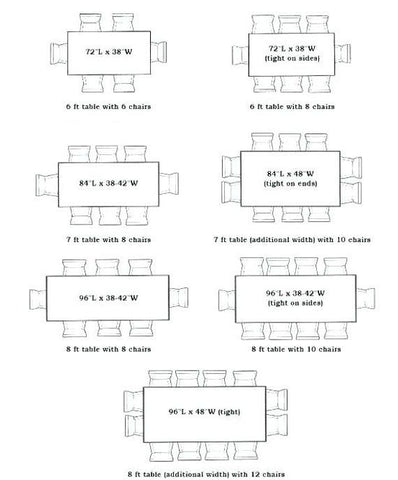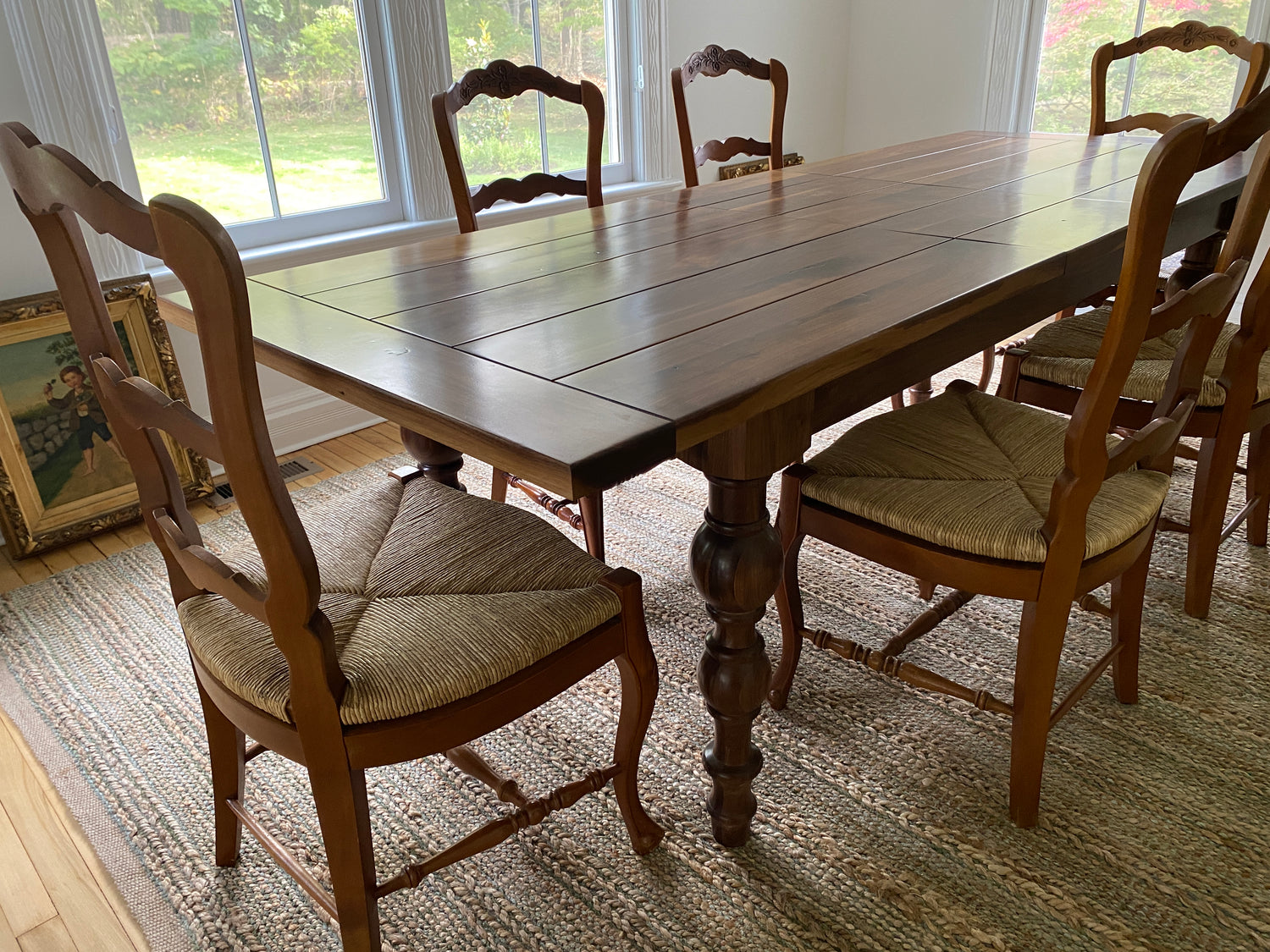Dining Table Size Guide
The graphic below can be used as a visual guide to see size and seating possibilities. Our tables begin at 36" wide which is standard dining table width. Seating capacity depends on a variety of factors such as: table leg size, chair size, and chair configuration. You can view a PDF of our dining table size guide HERE

Measure the Space
Before selecting a dining table, it is important to measure the room it is going in. It is optimal to have at least 42 inches between the edge of the table and a wall. This allows people to easily get in and out of their seating without feeling crammed under the table. 36 inches of space between the edge of the table and the wall is a bare minimum that you should never go below in an attempt to fit a larger table into a smaller space. Whenever you are selecting any type of furniture, it is critical that you measure the space, measure the furniture, and make sure that the fit will be as desired. Insider tip: Use painters tape and tape out the size of your table on your dining room floor to get a good visual.
Table Space
When sizing a table for a certain amount of guests, the name of the game is table space. Each person needs both enough space to fit in their seats and enough table space to comfortably dine. A good rule of thumb is to provide a bare minimum of 24 square inches per guest of table space, and optimally 30 square inches or more per guest. Remember all the extra accoutrements that take up table space and take them into consideration as well.
Table Height
Remember that the standard height for a table top surface is 30 inches and the standard seat height for dining chairs is 18 inches. This information will come in handy if you are considering using chairs that are not traditionally used as dining chairs. If they have a seat height of 18 inches, they will probably work. Be sure to consider armrest height as well, making sure they won't interfere with pulling a chair underneath the table.

